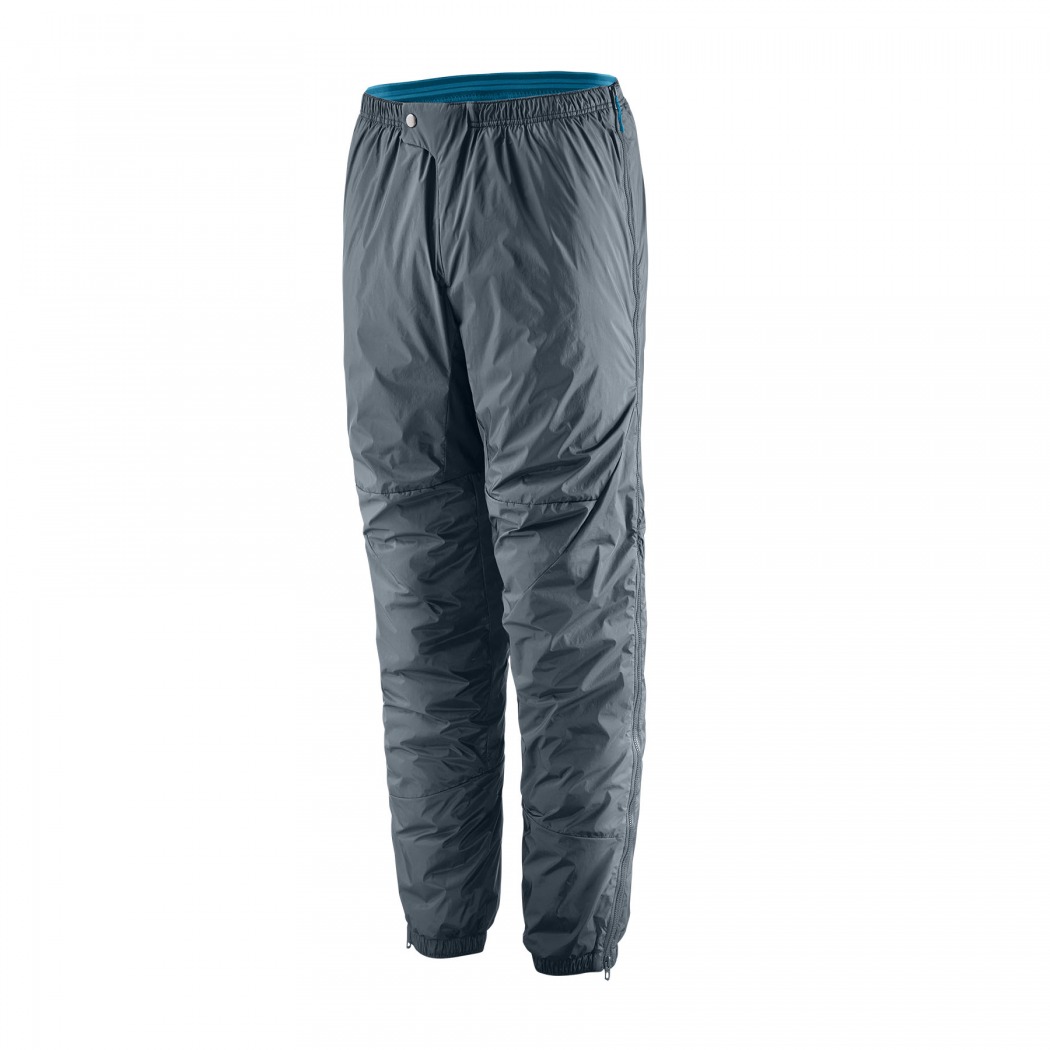
Patagonia’s DAS Light Pants provides full side zips and a lightweight package including synthetic insulation for use in all sorts of weather.
Insulated pants are a thing and not a new thing. They are somewhat of an old thing, as insulated pants go way back to when people and coldness commingled and wearing them assured a more positive outcome. Nowadays, we commonly know insulated pants as “belay pants” or those even more puffed-up styled-out “pants” for 8000-meter peaks.
I’m rarely an early adopter, but in the case of puffy pants, I make exceptions. For years they’ve been part of my daily wardrobe during winter, which, I’m convinced, lasts around late September to early May. My go-to puffy pants are a ratty pair of Patagonia Recycled Down Pants. These are the down pant equivalent of a quilted hunting cap: which I learned a few days ago is colloquially called a Stormy Kromer. I’m biased about the lack of the Stormy Kromer’s style. Like many, however, I’m allowed to bathe in some superficiality; if you cuff the bottoms of the down pants, I’m a pant leg-cuffer; the orange lining flashes loud and clear.
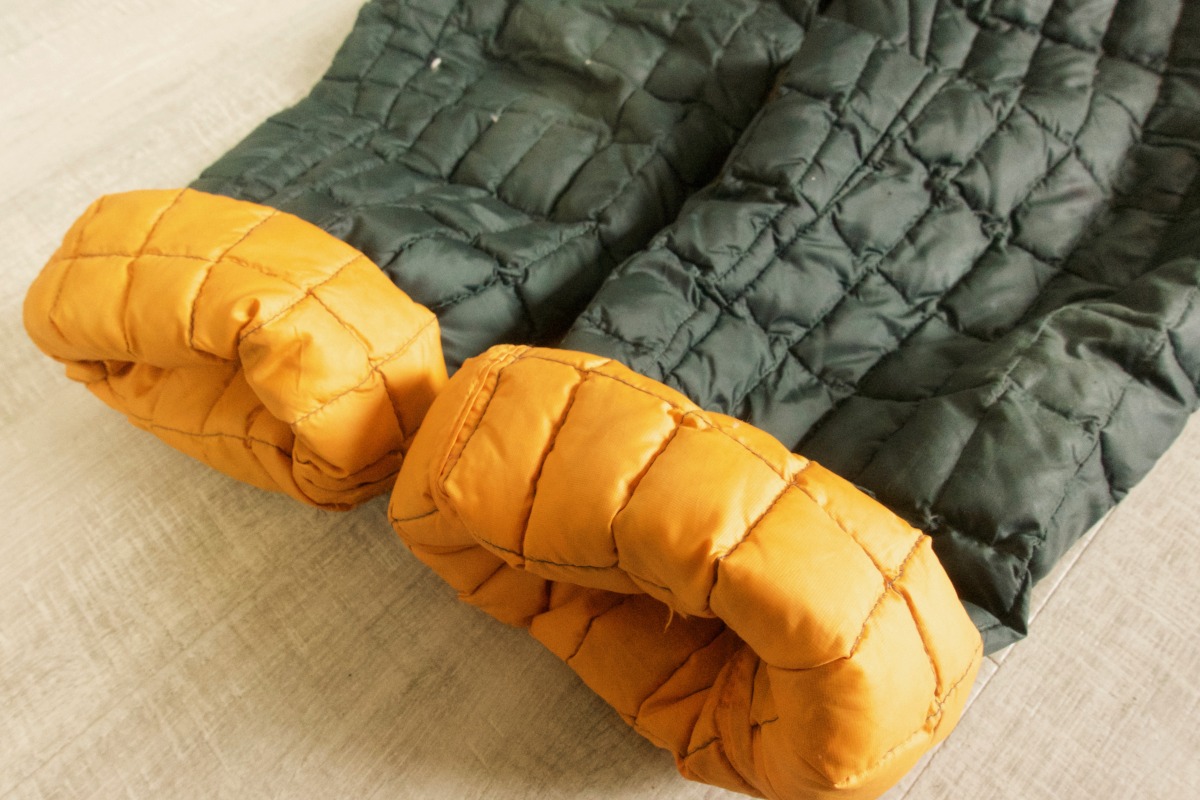
I’m loving the DAS Light Pants, which these are not. This is a shot of the old but good recycled down pants. There’s no full zip which makes them cumbersome for winter ski traverses. But a very fine orange inner fabric is revealed in all its glory when cuffed.
Patagonia’s DAS Light Pants, available next fall, are very lean on superficiality and fat on functionality for backcountry skiers/riders, climbers, runners, hikers, and on and on. The DAS Light Pant is the Yang to my Recycled Down Pant’s Yin. Moving forward, I’m certain the Recycled Pants might be serving a life sentence deep in the closet.
Spec #1 to discuss: The Weight of the DAS Light Pants, 344g for a size large.
These puffy pants are light and compact enough to stash in a pack if you might expect chilly weather or as critical insulation in an emergency. For comparison, a more traditional synthetic belay pant, Black Diamond’s Stance Pant, is ironclad and sweet, and weighs about 530g. I’d likely take along these pants if I were ice climbing (for use at shivery belays) or on hut trips where the approach was minimal. Although they sport full side zips and remain warm when wet (a synthetic fill upside), they slot in on the side of too bulky to pack routinely for a ski traverse or most ski/ride day trips.
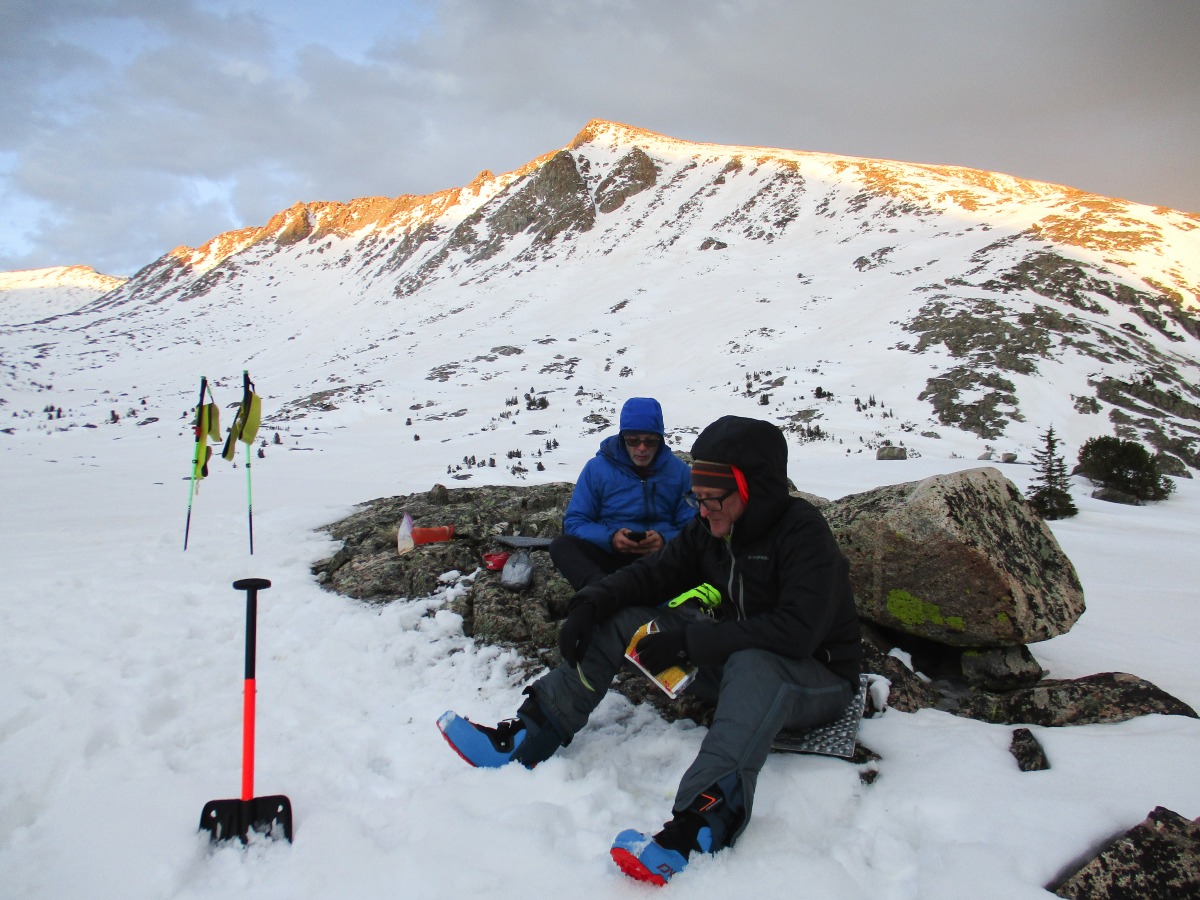
Melting water and awaiting a freeze-dried meal to rehydrate. The upshot–comfortable and insulated and lightweight pants.
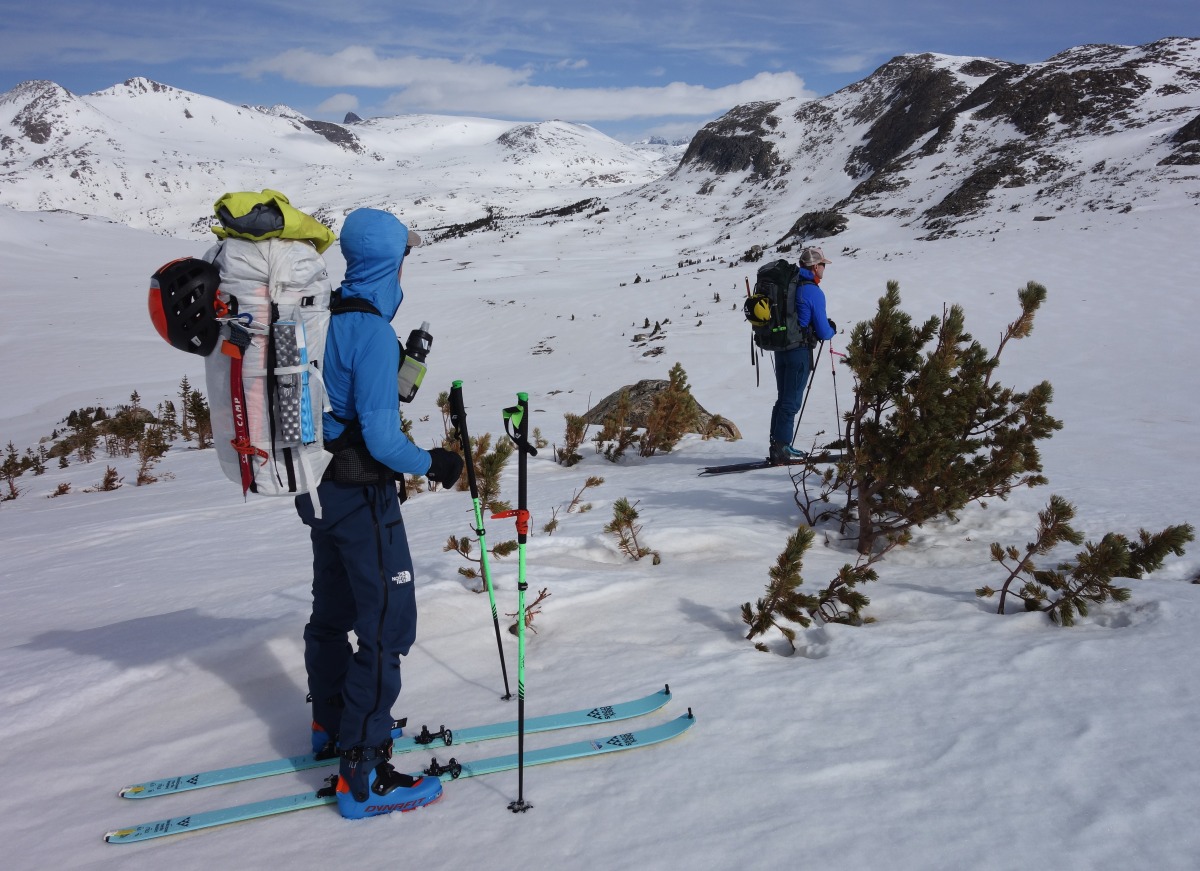
On a recent trip, I used the DAS Light Pants in the early AM pre-departure and in the evenings. The DAS Light Pants fit comfortably over the TNF Summit Futurelight Pants shown in this image.
Spec #2: Functionality.
If we gave out scores from 1-to 10, the DAS Light Pants would be a solid 9. The legs have full side zips, so getting on and off while wearing ski boots is no problem. You can also wear them next to your skin, and unzip the lower zipper to dump heat.
Patagonia calls this a regular fit; I’d agree with that. I’m 5’10” and have a 33″ waist. I’m good to go in either the large that Patagonia sent along or the medium I tried on recently. The large offers up a bit more leg room, but both sizes function well for me. The waist is elasticized and comfortable. Secure the waistband by locking the side zips and buttoning the front closure and zip-fly. The legs taper ——If you are wearing ski boots, you must unzip the lower zipper to accommodate the boot cuff.
Or, as another option, you can fully zip up the side zips and pull the pant cuff above the ski boot cuff, the DAS Light’s cuffs are elasticized. Lastly, you can tuck the pant cuffs into the ski boot if the zipper does not bother you.
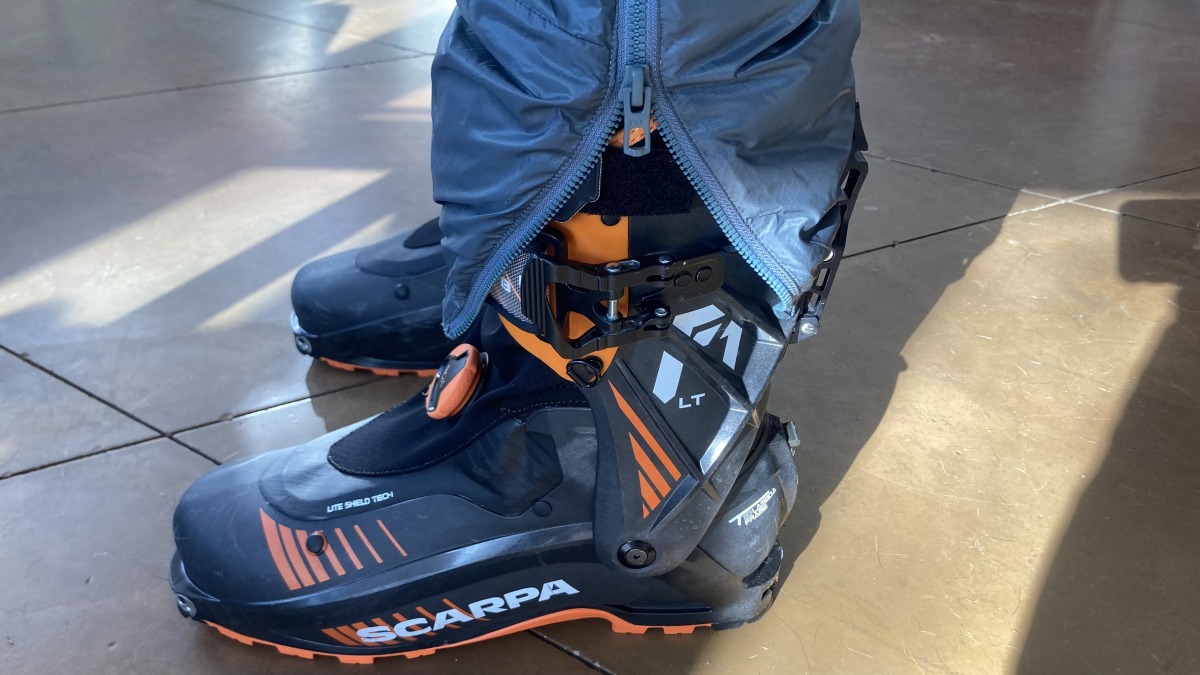
Caution, the tapered DAS Light Pants are made ideally for those wearing something other than ski boots if you insist on near full boot coverage.
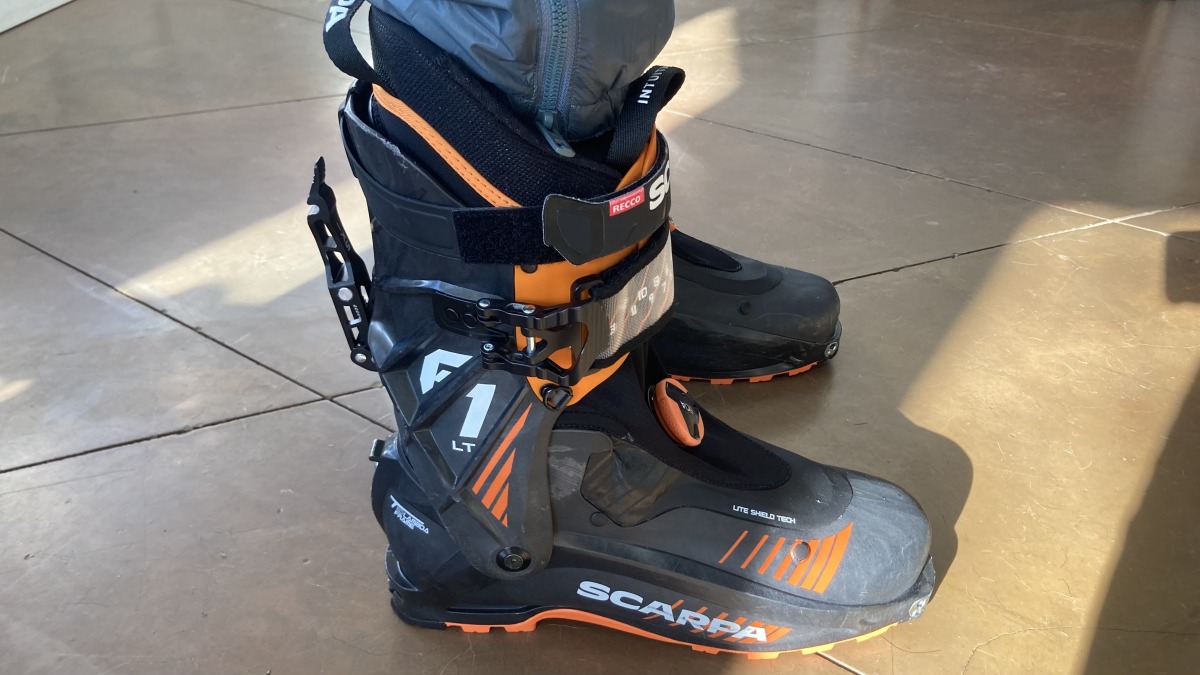
The tapered cuff of the DAS Light Pants can be pulled up and over a ski boot entirely, or tucked in a ski boot cuff if the zippers don’t bother you.
The pants are “fitted” but not restrictive. And say you are on a ski traverse and roll into camp or a rest break and want to prevent a chill. The DAS Light Pants easily fit over hard or softshell pants. This “overpant” functionality also makes them ideal for chilly mornings when you escape the tent’s warmth to melt water, etc. On the flip side, one can easily step out of the pants to prevent overheating once the skinning ensues: Work the upper and lower zips to the ½ way point on the leg and step out of the DAS Lights moments before clicking into the bindings, then shove the pants in your pack. Then, carry on.
Although the pants do not include a stuff sack, they pack down to about the size of a softball. I found that by shoving them into the innards of the HMG Porter 4400 backpack, they filled the nook and cranny voids left between larger items. If you are keen on strapping the pants on the outside of a pack for quick access, that storage strategy works too, as would stowing them in a small volume top-lid.
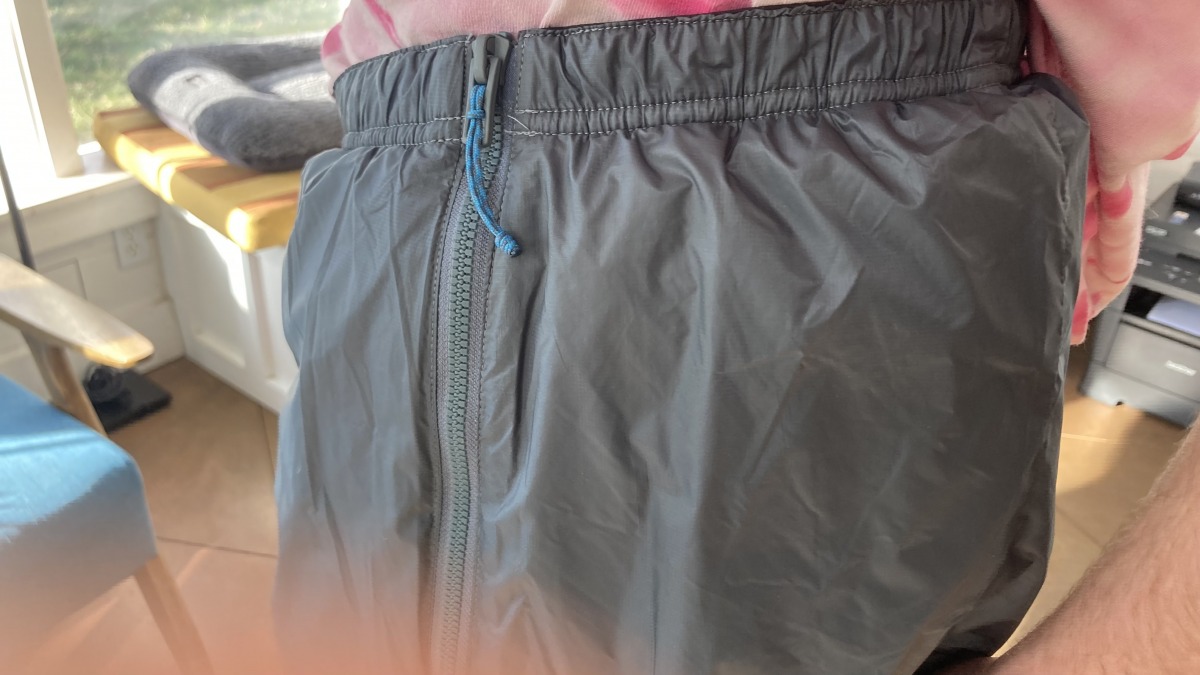
The pants feature an elastic wasit which is secured by zipping up the two side zips and a front button.
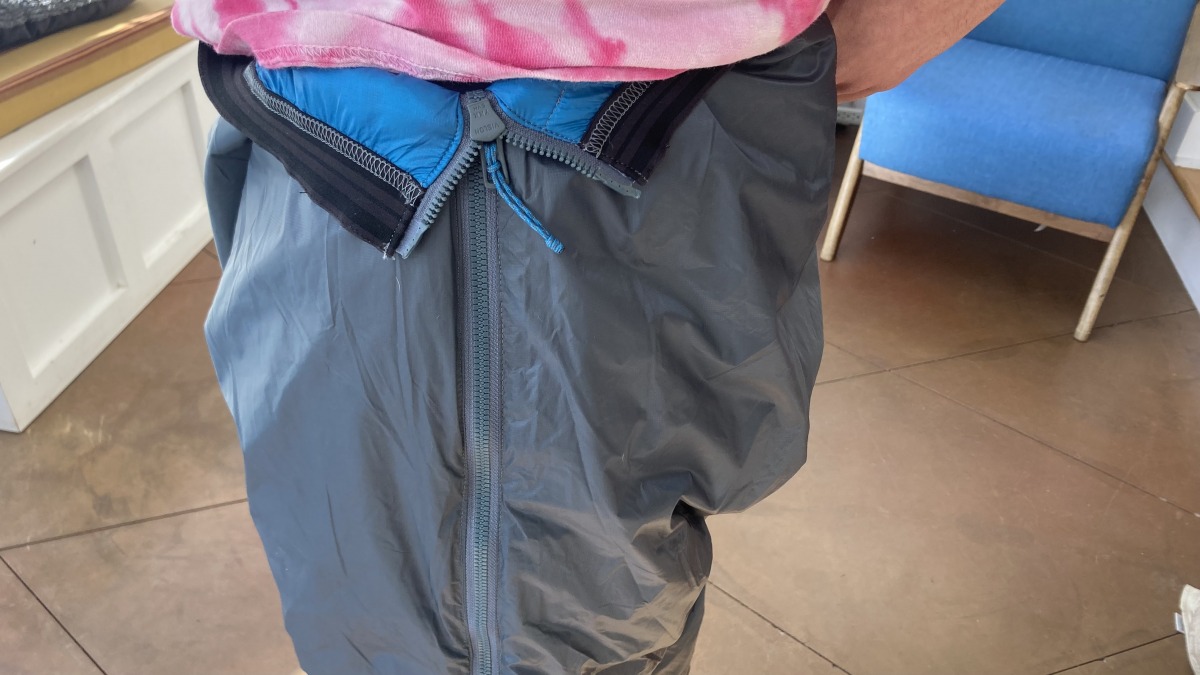
Here, the side zip is unsecured and the waistband is folded down revealing the inner elastic.
The DAS Light Pants share a name with the DAS Light Jacket, another excellent puffy for adventure skiing/riding. Both are insulated with Patagonia’s synthetic PlumaFill, which resembles down in looks. This fill adds to the broad functionality of the DAS Light Pants.
Like the DAS Light Jacket, the DAS Light Pants do not have a sewn-through quilt pattern like Patagonia’s Micro Puff Jacket (read our full review of the jacket). First, the non-sewn-through quilts of the DAS Light line create fewer (if any) cold spots. I’ve got a beat to hoo-hash Micro Puff, and the DAS Light Jacket feels warmer. I can say the DAS Light Pants are toasty too.
The face fabric, also the same as the DAS Light Jacket, is a 100% recycled lightweight 0.8-oz, 10-denier Pertex® Quantum Pro ripstop nylon with a waterproof PU coating. This outer fabric is treated additionally with a PFC-free DWR and the windproofing feels near total. In rain sprinkles, the coating does bead up water. In more driving horizontal snow, as I experienced on a Wind River bathroom stop (not roadside but mountainside), the fabric does wet out slightly with no perceptible loss of insulating capacity. (The DAS Light Pants pop off quickly for those elongated bathroom pitstops or more Defcon 1 sensations.)
These are not hardshell substitutes in raging downpours. With that qualifier, as a synthetic insulated piece, the adage “keeping you warm when wet” applies. This is relevant as the pants are light enough to air dry quickly when worn against the skin, over hardshell/softshell ski pants, or hung out to dry on a makeshift clothesline. If wet, the DAS Light Pants will not remain wet for long once the precip ceases (this assumes the pants are not balled up soaking wet and shoved into the bowels of a pack).
The word from the friend who helps run gear testing at the company is that the PU layer ( added to the interior side of the face fabric) helps prevent moisture from permeating the insulation, acting as another barrier to moisture. Since most DWRs I’ve encountered wear off in relatively short order, the PU should help when the DWR degrades and it’s moist out. The PU coating is said to add some degree of durability.
The durability of these pants, so far, is solid. My fashion sense is skewed, as is my defective thermoregulation; I’ve been wearing these pants three to four days a week for several months. However, if you are familiar with the brand’s insulated pants of the past, like the bulkier DAS Pant (full zip side zips and Primaloft insulated) or Nano Puff pants for fishing (used by some skiers but no side zips and 60g Primaloft), the face fabric of the DAS Light Pants is lighter and more delicate.
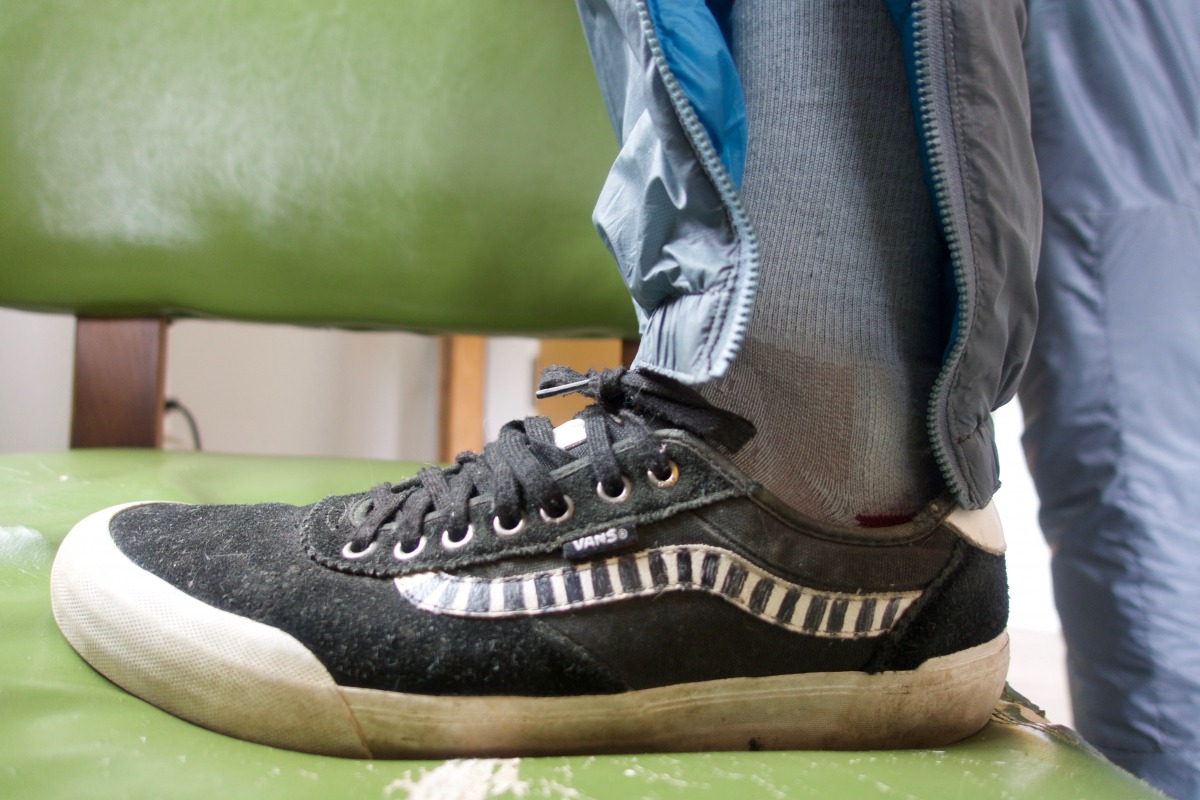
A shot of the cuff unzipped.
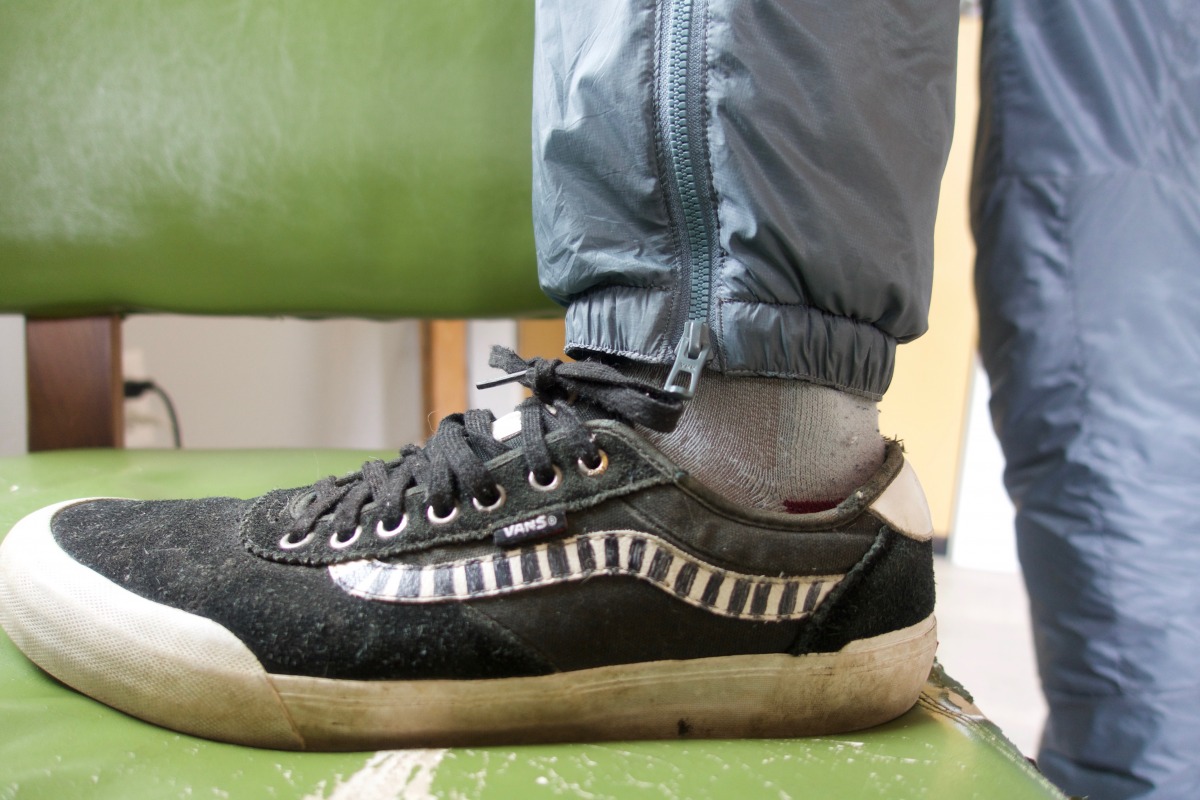
A shot showing the tapered and zipped up cuff.
As a company, Patagonia has more alpinist roots than ski roots. The DAS Lights, on the surface, are crafted more for hard-charging alpinists than skier/riders. These would make for excellent belay pants or pants to wear while actively climbing in a cold environment——consider them a no-brainer for those aspiring to make the most of the Alaska Range as a skier, climber, or both.
Nit-picky mods would be a pant cuff that widens at the cuff to fit over a ski boot when fully zipped. But again, I’m guessing this trickle-down of clothing tech on the DAS Light Pant filtered from the alpinism side of the brand, not the pure skiers. Otherwise, I have a tough time finding flaws.
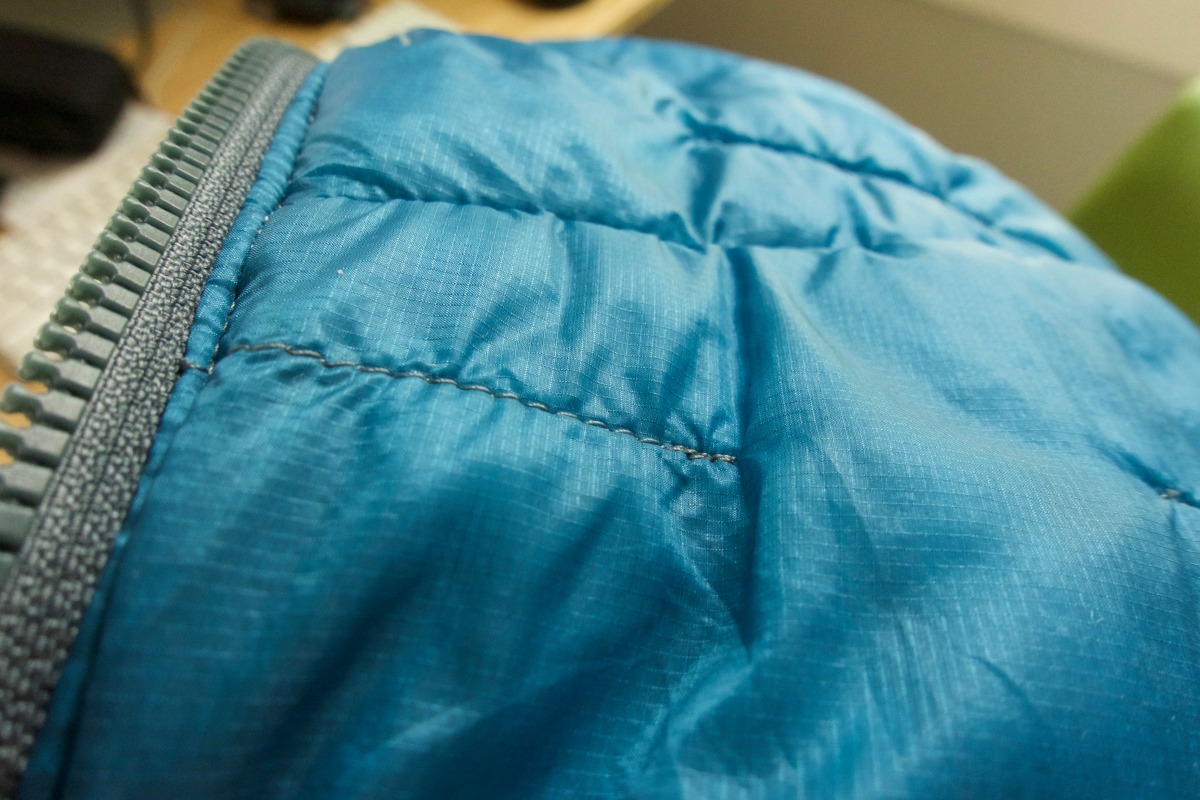
The interior fabric of the DAS Light pants. It is strategically quilted to prevent insulation migration and mimic the attributes of down fill. The pants are insulated with Patagonia’s PlumFill synthetic insulation.
Puffy pants are on my shortlist for items where desert island scenarios might play out. You know the game, a list of restricted items you desire if stranded on an island. With the DAS Light Pants, think maybe more Baffin Island than Maui considering how warm you’ll be in these insulated pantaloons.
The DAS Light Pants are a Patagonia piece, so I’m guessing we know how that plays out: premium design and an attempt at minimalist environmental impact, and it will cost you $299.00. That’s a bit more than one dollar/g. If you dig insulated pants and did not get burned by Bitcoin, this is one gem of a piece. If you have no experience with insulated pants, jumping right into a DAS Light as your initiation to puffy pant life is like showing up for driver’s ed in a _________ (fill in the blank for your most desired auto).
Patagonia will release the DAS Light Pants in a unisex fit. My guess is these will sell out fast.
Jason Albert comes to WildSnow from Bend, Oregon. After growing up on the East Coast, he migrated from Montana to Colorado and settled in Oregon. Simple pleasures are quiet and long days touring. His gray hair might stem from his first Grand Traverse in 2000 when rented leather boots and 210cm skis were not the speed weapons he had hoped for. Jason survived the transition from free-heel kool-aid drinker to faster and lighter (think AT), and safer, are better.
